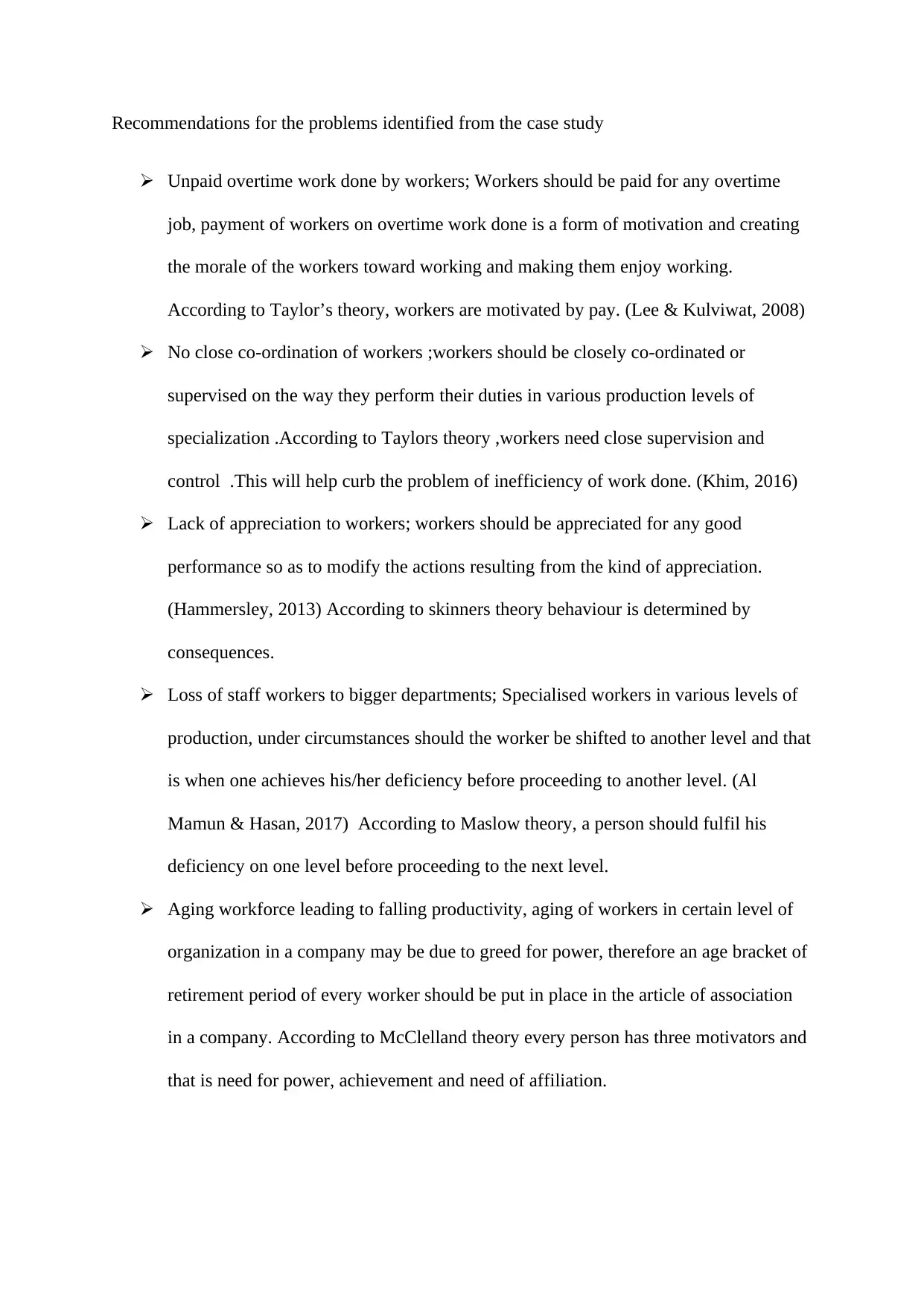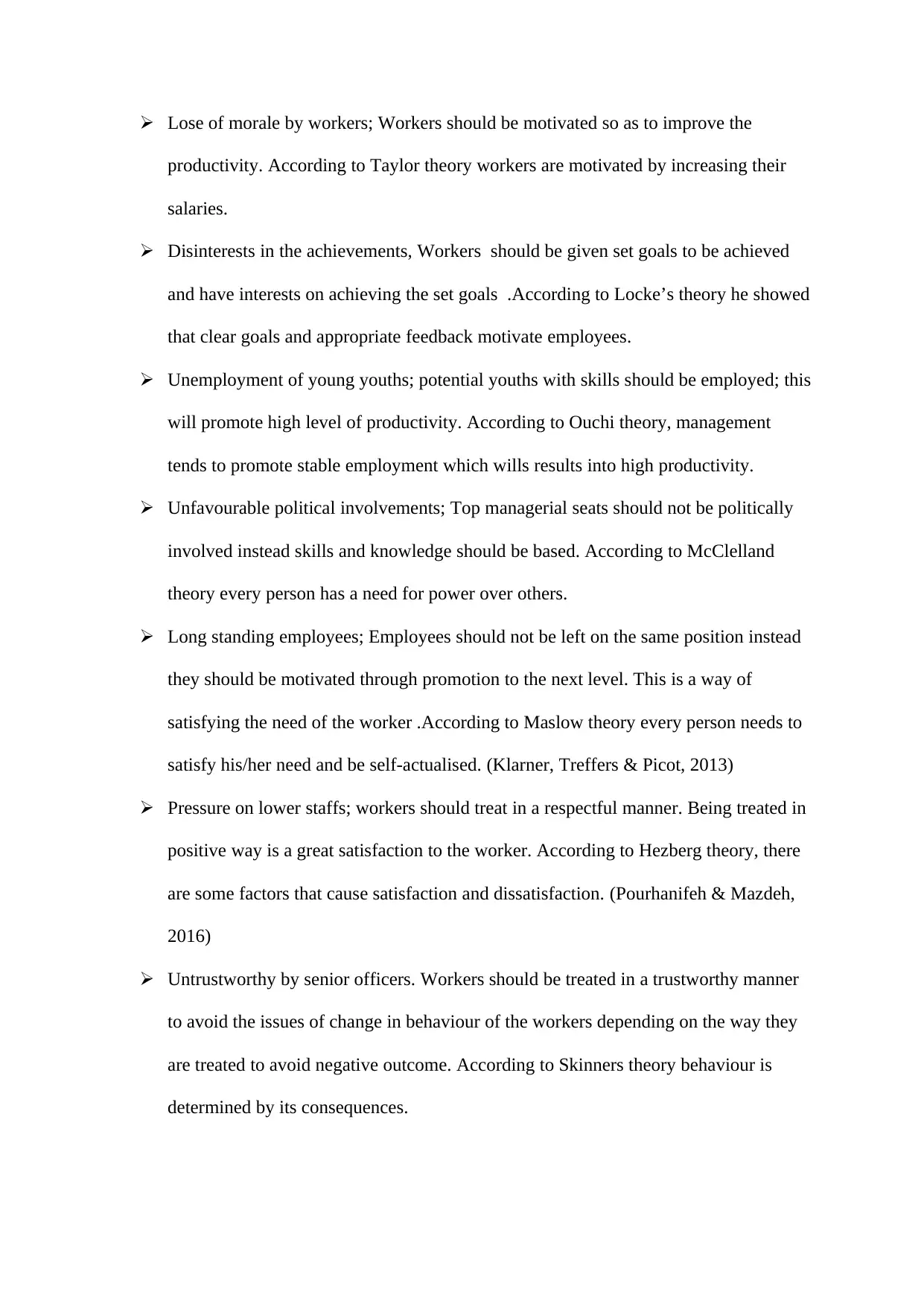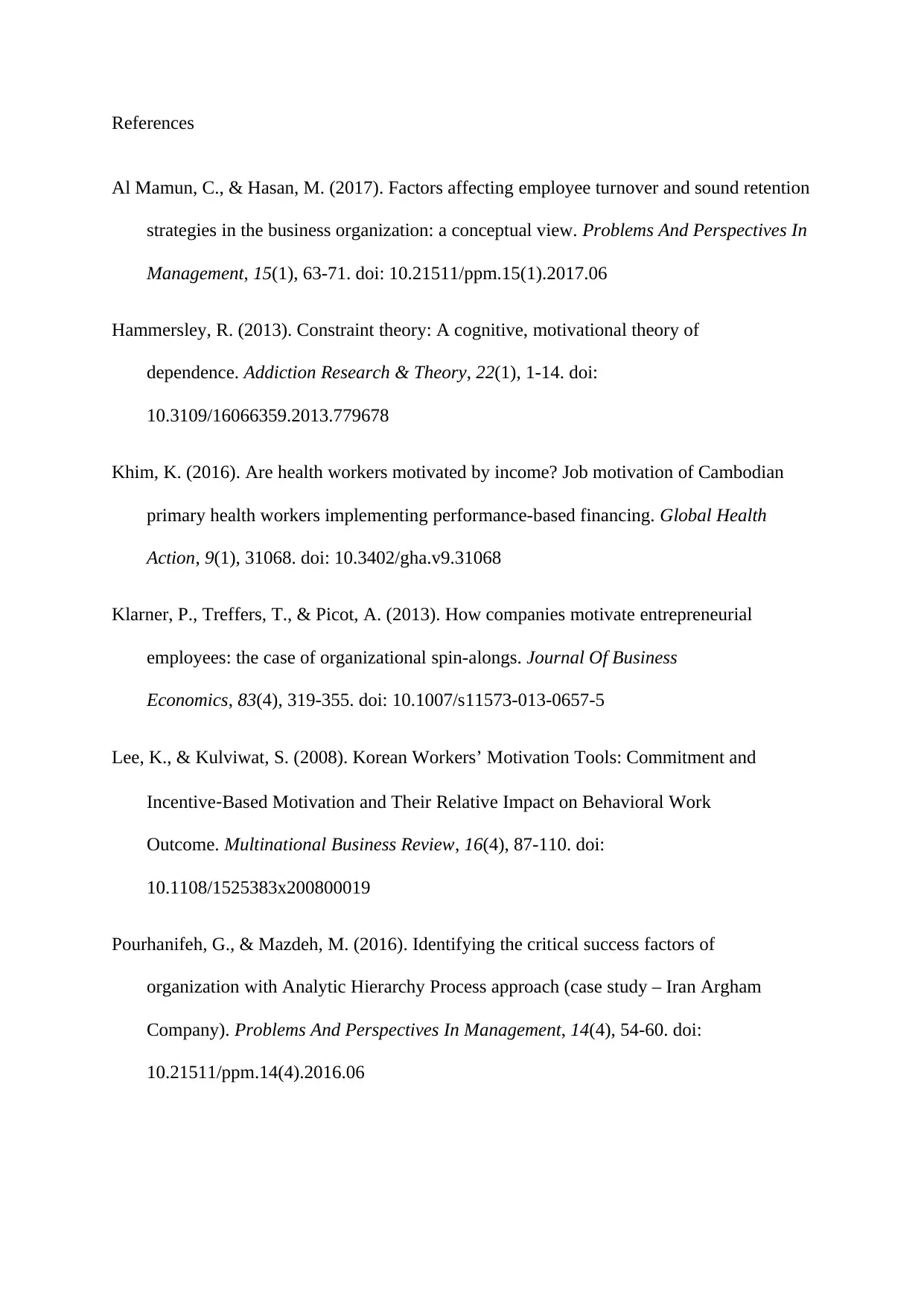University Case Study Report: Recommendations for Workplace Problems
VerifiedAdded on 2021/06/14
|4
|864
|77
Report
AI Summary
This report presents recommendations for addressing various workplace issues identified in a case study. The recommendations cover several key areas, including the need for fair compensation for overtime work, emphasizing that paying for overtime is a motivator and boosts employee morale. It also suggests the importance of close coordination and supervision to improve work efficiency, drawing on Taylor's theory. Additionally, the report stresses the importance of appreciating workers for good performance, aligning with Skinner's theory of behavior modification. Other recommendations address staff retention, advocating for clear career progression, and suggest strategies for managing an aging workforce. The report also highlights the significance of employee motivation, goal setting, and creating a positive work environment, referencing theories by Maslow, McClelland, Locke, Ouchi, and Herzberg. The document is a valuable resource for students studying leadership and management, offering insights into practical solutions for common workplace challenges. The report draws upon various management theories to support its recommendations, including Taylor's, Skinner's, Maslow's, McClelland's, Locke's, Ouchi's, and Herzberg's theories.
1 out of 4









![[object Object]](/_next/static/media/star-bottom.7253800d.svg)